Arezzo - Valtiberina
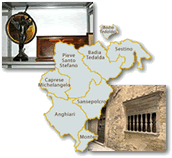
The upper Tiber river valley on Tuscan soil has its historical and cultural centres at Sansepolcro and Anghiari. Piero della Francesca, one of the greatest theorists of perspective in the Renaissance was born precisely in Sansepolcro. With a wealth of historical and artistic suggestions, the Valtiberina also offers numerous, original tokens of scientific interest. These green valleys are indeed home to one of Europe’s most famous research centres for processing medicinal plants.
The itinerary can start out from Arezzo with a worthwhile visit to the permanent exhibition presently hosted in Palazzo Sabatini, which documents the history of communication means.
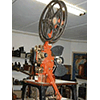
In 1975, antiquarian Fausto Casi began collecting the more than 1000 apparatuses that document the history and evolution of means of communication. The collection includes period radios, from the Marconi patent to 1940’s radios, and historical material on cinema, from nineteenth-century optical games to the amateur cinema of the 1960s. There is also a collection of scientific instruments tied to the discovery of X-rays, such as old vacuum pumps and Geissler and Roentgen tubes. The period pieces are joined by historical-bibliographical material: a rich library, archive documents, film footage and photographic documents.
Housed in Palazzo Sabatini, since December 2005 the collection has become the permanent exhibition "Per un museo dei mezzi di comunicazione. Suono - Scrittura - Immagine" ["For a museum of communications. Sound - Writing - Images"], managed by "The World at Home" cultural association.
(Fausto Casi)
Coming from Arezzo on SP43 and SP47, we reach the pleasant town of Anghiari, famous for the battle immortalised by Leonardo da Vinci in frescoes now lost. It is precisely to this historical episode that the Centro di Documentazione della Battaglia di Anghiari is consecrated. Here the tourist will see a reconstruction of the battle and can visit the section dedicated to military engineering and to the production of the ancient weapons of Anghiari.
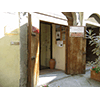
Situated in the Palazzo del Marzocco, the Centre illustrates the Battle of Anghiari (1440), made famous by the fresco, now lost, that the Florentines commissioned Leonardo da Vinci to paint in commemoration of their victory. The Commune of Anghiari has designed a special permanent exhibition area to display a replica on canvas of Leonardo's work, commissioned of Vittoria Chierici, along with a relief model and a number of multimedia posts for the virtual reconstruction of the battle. Leonardo's fresco is also documented by anastatic copies of his drawings, as well as a series of wedding chests dating from the third quarter of the 15th century.
Sections dedicated to the weapons used in the Battle of Anghiari, to military engineering and to local history are now being set up.
(Graziano Magrini)
The Renaissance was also the period in which the local Confraternita di Misericordia was founded. Its ancient structure today houses a homonymous museum with collections that can boast unique exhibits tied to the institution’s hospital activity.
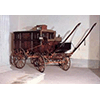
In 1564 the Company of the Holy Spirit was founded in Anghiari; it later took the name of the Confraternita di Misericordia, dedicated to caring for the sick and burying the dead. In 1870 a Misericordia Hospital was also founded. Starting in 1975, the Historical Archives have been rearranged and the Museum located in the ancient building of Badia, the Brotherhood’s historic residence, has been renovated.
The collection displayed in the Museum consists of various kinds of equipment for ambulances and for assisting the ill at home, dating from the late 19th century; uniforms of the Anghiari Misericordia and four means of transporting patients (a litter mounted on wheels from 1861, a small wagon-stretcher from 1909 called "emergency" for its use in emergencies, a wagon-structure on wheels to be pulled by hand, and an iron device for lifting patients from their beds).
(Stefania Mangia)
Continuing along SP43 and then taking SS73/E78, a few kilometres away lies Sansepolcro, a little town with a clear Renaissance imprint. In the heart of the city is the Aboca Museum, an important collection dedicated to collecting and processing medicinal plants.
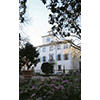
The Museum, located in Palazzo Bourbon del Monte, was instituted in 2002 at the initiative of the Aboca company, active for over twenty years in the sector of medicinal plants, with the aim of providing historic evidence of the utilisation of herbs and reviving their traditional usage. Displayed in its exhibition rooms are antique utensils employed in ancient pharmacies to preserve and prepare medicinal herbs: mortars made of bronze, stone, alabaster, ivory and wood, of Italian and European provenance; majolicas, ceramics and blown glass jars. The material also includes tools for harvesting the herbs and laboratory instruments from the 18th century. Reconstructions of the traditional settings in which the herbs were prepared may also be seen.
The library contains printed books dating from the 16th through the early 20th century, relevant to botany, pharmacy and chemistry, as well as collections of botanical iconography and numerous herbariums (illustrated with copperplate engravings, woodcuts and lithographs).
(Stefania Mangia)
Also in the historical centre and particularly interesting for the history of glassmaking science is the Museo "Bernardini-Fatti" della Vetrata Antica, housed in the deconsecrated church of San Giovanni Battista.
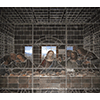
Hosted in the church of San Giovanni Battista, the first news of which dates to 1126, the Museum of Stained Glass of Sansepolcro opened in 2003 and constitutes one of the first organic attempts in Italy to create a museum dedicated to stained glass. It mainly houses works that can be dated between the late 19th century and the early 20th century, including the outstanding life-size copy, in painted glass, of Leonardo’s Last Supper, made between 1937 and 1942 by Rosa and Cecilia Caselli and donated to the city by townsman Luigi Fatti. The Giuseppina Bernardini Collection instead contains stained glass with sacred subjects that can be dated to the second half of the 19th century, such as the large Crucifix, a masterpiece of British Pre-Raphaelite art.
Particularly interesting from a scientific viewpoint is the exhibition of stained glass samples (with and without figures), enriched by a collection of sketches, coloured panels and engravings from the late 18th century, which are joined by craftsmen’s workshop materials and texts illustrating the history, making and restoration of stained glass, and make it possible to trace back the phases of this ancient art. By appointment, demonstrations are offered on the making of traditional stained glass involving lead.
(Elena Fani)
****************************
Texts by Elena Fani
English translation by Victor Beard
Last update 09/feb/2008



 = libraries and archives
= libraries and archives  = scientific research centers
= scientific research centers  = memorial places of scientists
= memorial places of scientists = public health places
= public health places = places of science and worship
= places of science and worship = places of technology
= places of technology  = museums and collections
= museums and collections  = villas and gardens of science
= villas and gardens of science

